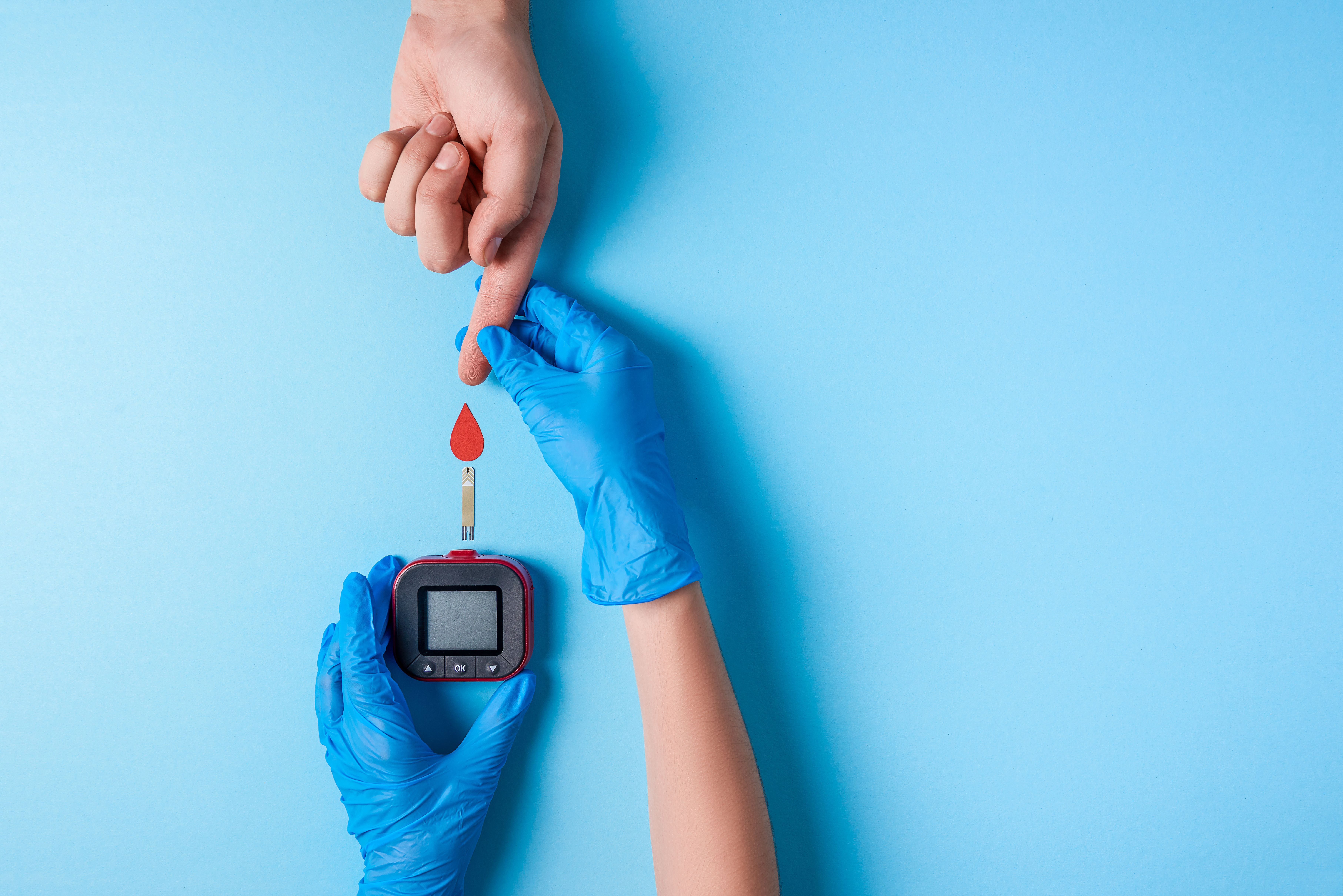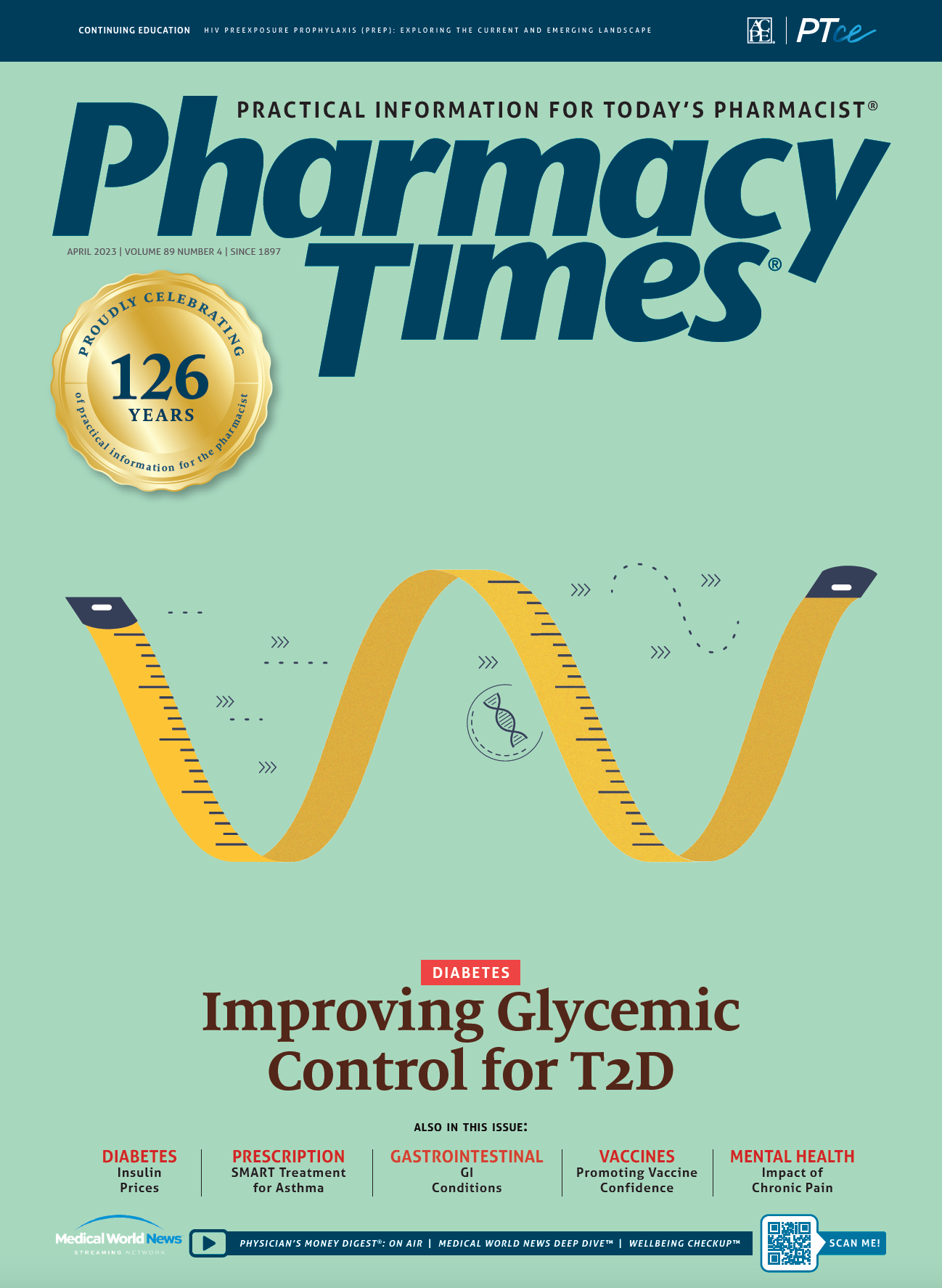Help Patients Improve Glycemic Control for T2D
Keeping blood glucose levels within a target range delays prevents serious health complications associated with type 2 diabetes.
More than 37 million individuals in the United States have diabetes, and 96 million have prediabetes, many of whom do not know it. The estimated annual cost of diabetes is more than $325 billion.1 As such, type 2 diabetes (T2D) is considered an epidemic and accounts for a significant percentage of health care costs in the United States.
Glucose monitor | Image credit: KaterynaNovikova - stock.adobe.com

It is important to keep blood glucose levels within a target range as much as possible to delay or prevent long-term, serious health problems such as heart or kidney disease, neuropathy, and vision loss. Unfortunately, 40% to 60% of individuals with T2D do not meet their glycemic goals. This leads to a higher risk of avoidable, serious complications.2
Blood Glucose Measurement
The hemoglobin A1C (HbA1C) test is the gold standard for measuring blood glucose levels, according to the American Diabetes Association. The test measures average blood glucose levels over a 2- to 3-month period. When sugars enter the bloodstream, they attach to hemoglobin, a protein found in red blood cells (RBCs). The HbA1C test measures the percentage of RBCs that have a coating of sugar on hemoglobin.3 Normal HbA1C levels are below 5.7%. Prediabetic HbA1C levels are between 5.7% and 6.4%. Diabetic A1C levels are 6.5% or above. This test must be conducted in a doctor’s office or in a laboratory.3
Regular home blood glucose monitoring is the most important part of proper glycemic control, as it provides real-time feedback about how the body handles glucosebased exercise levels, food intake, and medications taken.4 Using handheld glucometers to regularly test blood glucose upon waking (fasting), as well as preprandial and postprandial levels and at bedtime, can provide patients with the feedback they require to make changes to support proper glucose control.
When it comes to blood glucose targets, the first is before a meal. This measurement should be 80 to 130 mg/dL. The second is 2 hours after the start of a meal and should be less than 180 mg/dL. Personal goals may differ based on age, comorbidities, and other factors.5
Low Blood Glucose
Hypoglycemia, low blood glucose, can have many causes including drinking alcohol, exercising more than usual, skipping meals, or taking too much diabetes medication. Blood glucose levels under 70 mg/dL are considered low.
Symptoms of hypoglycemia vary but typically include confusion, dizziness, hunger, irritability, nervousness, shaking, and sweating. Hypoglycemia can be dangerous, so immediate treatment is recommended.5
Treatment for hypoglycemia includes one of the following: drinking 4 oz of fruit juice; drinking 4 oz of regular soda; eating 4 pieces of hard candy; or taking 4 glucose tablets. After that, patients should wait 15 minutes, recheck blood glucose levels, and repeat if necessary.5
High Blood Glucose
Hyperglycemia, or high blood glucose, can be caused by becoming sick or stressed, overeating, or taking too little diabetes medication. Over time, hyperglycemia can cause serious health issues.5 Symptoms include feeling tired or thirsty, having blurry vision, and urinating more than usual.5
It is especially important to test blood glucose levels more often when sick. Patients may not be drinking and eating normally, and the body’s immune system may contribute to increased glucose production. If blood glucose levels are 240 mg/dL or above, urine should be tested for the presence of ketones using ketone test strips. High ketones may be an early sign of ketoacidosis, which normally poses a medical emergency.5
Keeping Stable Glucose Levels
Eating a healthy diet is key to maintaining blood glucose levels within the ideal range. A healthy diet consists of fruits, good fats, lean meats, low-fat dairy, vegetables, and whole grains.
Carbohydrates, when digested, turn into sugars in the body, raising blood glucose levels. Healthy carbohydrates include fruits, legumes, low-fat dairy products, vegetables, and whole grains. Patients with diabetes often use a tool called a glycemic index. This scale ranks carbohydrate-containing foods by how much they raise blood glucose levels after eating. Foods with a high glycemic index increase blood glucose levels faster and higher than foods with a low glycemic index. Many fruits and vegetables fall into the low or medium glycemic index category.6 Foods with a favorable glycemic index also decrease the risk of heart disease and stroke, provide a prolonged satiated feeling, and help maintain weight.6
Fiber-rich foods can help control blood glucose by slowing digestion and supporting insulin sensitivity. There are 2 types of fiber: insoluble fiber and soluble fiber. Insoluble fiber does not dissolve in water and typically remains whole through the stomach, which supports insulin sensitivity and keeps the bowels healthy. Soluble fiber dissolves in water and forms a gel-like substance in the stomach, slowing digestion.
Being physically active goes along with eating healthy. Regular physical activity helps manage diabetes and reduces the risk of serious health complications associated with the disease. Exercise increases the amount of glucose used by the muscles and helps the body use insulin more efficiently.7
Doing different activities each week provides the most health benefits. Mixing cardiovascular activities with strength training and stretching provides a variety of health benefits and keeps patients from becoming bored with their routines.7
Although most physical activity helps with glucose control, certain activities may be unsafe for some individuals. Pharmacists should always counsel patients to check with their physicians before starting exercise routines.
In addition, patients should drink plenty of water, not only to stay hydrated but to flush glucose from the kidneys; get enough sleep, as irregular sleep can result in glucose intolerance; and reduce stress, because stress causes the body to release hormones called cortisol and glucagon, which cause blood glucose levels to rise.8,9
About the Author
Kathleen Kenny, PharmD, RPh, is a clinical medical writer for Healthline Media in Colorado Springs, Colorado.
References
1. Diabetes and prediabetes. CDC. Updated September 6, 2022. Accessed March 13, 2023. https://www.cdc.gov/chronicdisease/resources/publications/factsheets/diabetes-prediabetes.htm
2. Blonde L, Aschner P, Bailey C, Ji L, Leiter LA, Matthaei S; Global Partnership for Effective Diabetes Management. Gaps and barriers in the control of blood glucose in people with type 2 diabetes. Diab Vasc Dis Res. 2017;14(3):172-183. doi:10.1177/1479164116679775
3. All about your A1C. CDC. Updated September 30, 2022. Accessed March 13, 2023. https://www.cdc.gov/diabetes/managing/managing-blood-sugar/a1c.html
4. Monitoring your blood sugar. CDC. Updated December 30, 2022. Accessed March 13, 2023. https://www.cdc.gov/diabetes/managing/managing-bloodsugar/bloodglucosemonitoring.html#:~:text=Use%20a%20lancet%20to%20prick,seconds%2C%20the%20reading%20will%20appear
5. Manage blood sugar. CDC. Updated September 30, 2022. Accessed March 13, 2023. https://www.cdc.gov/diabetes/managing/manage-blood-sugar. html#:~:text=A%20blood%20sugar%20target%20is,Less%20than%20180%20mg%2FdL
6. Glycemic index food guide. Diabetes Canada. Accessed March 13, 2023. https://guidelines.diabetes.ca/docs/patient-resources/glycemic-indexfood-guide.pdf
7. Diabetes diet, eating, & physical activity. National Institute of Diabetes and Digestive and Kidney Diseases. Updated December 2016. Accessed March 13, 2023. https://www.niddk.nih.gov/health-information/diabetes/overview/diet-eating-physical-activity
8. 14 easy ways to lower blood sugar levels naturally. Healthline. Updated November 30, 2021. Accessed March 13, 2023. https://www.healthline.com/nutrition/15-ways-to-lower-blood-sugar#The-bottom-line
9. The impact of poor sleep on type 2 diabetes. National Institute of Diabetes and Digestive and Kidney Diseases. March 17, 2021. Accessed March 13, 2023. https://www.niddk.nih.gov/health-information/professionals/diabetes-discoveries-practice/the-impact-of-poor-sleep-on-type-2-diabetes#:~:text=Q%3A%20Can%20sleep%20problems%20or,sleep%20all%20promote%20glucose%20intolerance

